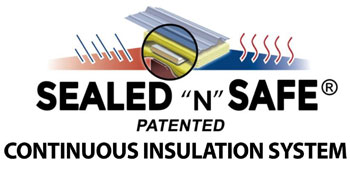Thermal Spacers for Code Compliance and Improved Energy Efficiency in Metal Buildings
This course is no longer active. AEC Daily will not report completion information for this course.
The key to an energy-efficient metal building is the implementation of a continuous insulation system that virtually eliminates thermal bridging and prevents condensation. This course discusses how using thermal spacer blocks and metal building insulation in the building envelope increases energy performance and meets stringent energy code requirements.
Upon completion of this course, the Learner should be able to:
- Describe metal buildings, how they are manufactured, and the components that make up a metal building system.
- Explain the issues that compromise the energy efficiency of a building and the design elements that can be implemented to prevent these issues.
- Summarize the International Energy Conservation Code (IECC) compliance paths and the role thermal spacer blocks play in meeting code requirements.
- Define thermal spacer block and list its performance benefits with a focus on how it contributes to the thermal efficiency of a building envelope.
Approximately 1 hour, 30 minutes. Delivered online, at your own pace.
Presented by Roger Cox on behalf of Sealed N Safe. View the Privacy Policy .
Presenter Information

Name: Roger Cox
Title: Director, Sealed N Safe
Background: Roger Cox is a leading authority on Continuous Insulation System and Thermal Bridging Technologies. Working as a metal building consultant for C.O. Building Systems since 2005 has given Roger experience and knowledge in the metal building industry. In 2008, Sealed N Safe was founded. Its main objective was to overcome heat losses and to develop technologies that would increase energy performance in metal buildings. Roger is the director of Sealed N Safe. He graduated from Utah State University in Business. Roger is dedicated to providing energy solutions that are both cost effective and easy to implement in pre-engineered metal buildings.
